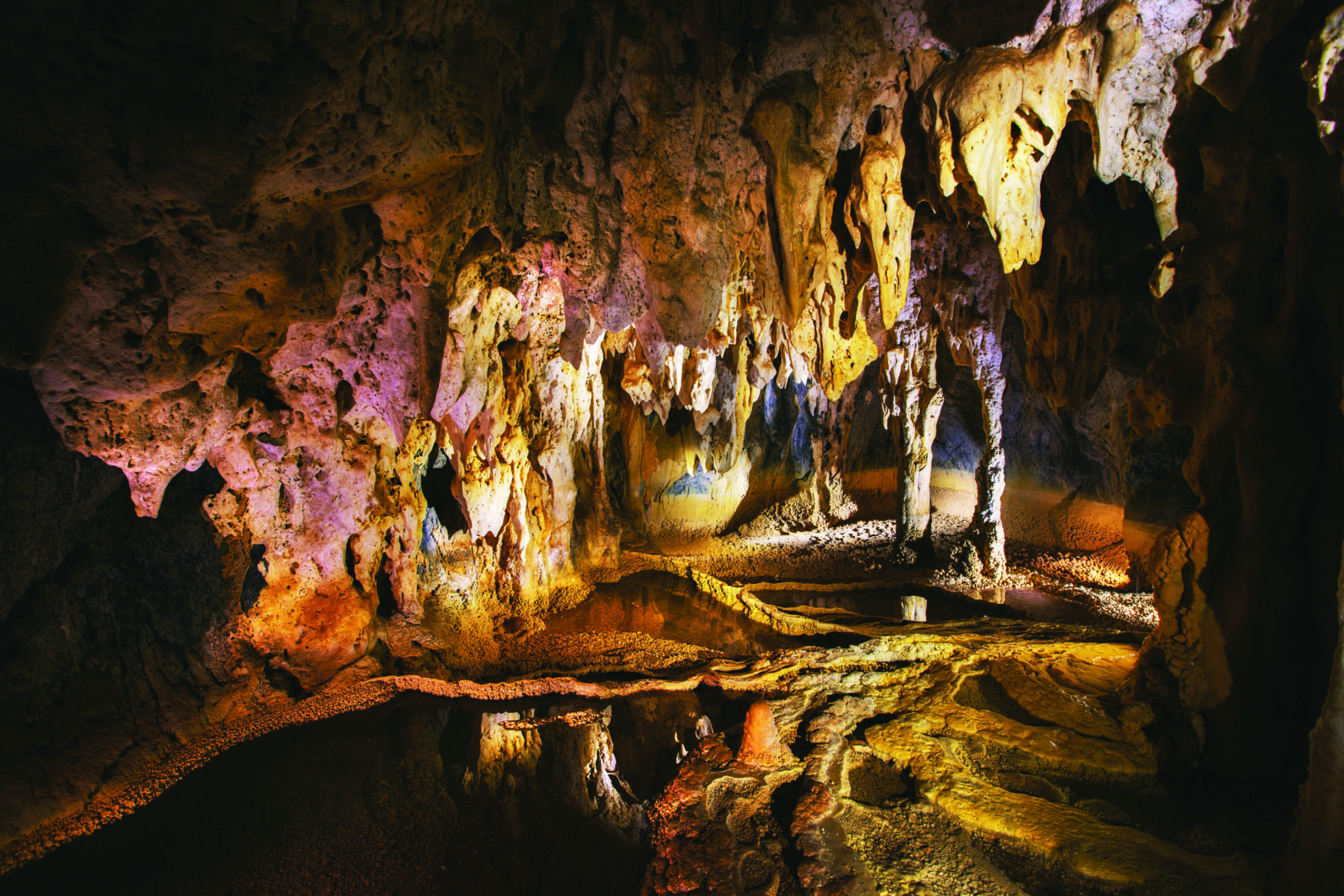Natural wonder: Savannah Caves

WE’RE STANDING at the mouth of a cave in Undara Volcanic National Park, 265km south-west of Cairns. It’s midsummer, an hour after sundown. There’s a soft breeze. Trees and vines hang overhead, silhouetted against the warm evening sky. By rights this should be a placid time on the savannah.
Instead, it’s rush hour. Every single opening in the leafy latticework above is an aerial expressway. Thousands of micro-bats are whirling past us into the night. Their frantic wing-beats fan our faces with musty cave air. The sound is incessant, a streaming white noise like the patter of rain on a forest canopy.
To be amid this flapping exodus – channelled by the uncanny power of echolocation – feels sensational. And yet, something is missing. My guide, Liz Fisher, is puzzled. “I don’t understand it; they’re usually here by now,” she says, scanning the trees with the red glow of her torch. “Our snakes are running late.”

THIS IS BARKERS CAVE, near the park’s western boundary. About 27km to the east sits the dormant Undara Volcano, its crater rim standing a paltry 20m above the surrounding plains. However, in vulcanism, elevation isn’t everything. Beginning 190,000 years ago, Undara erupted, not with a bang but a long, seething gush of lava. At times the rate of flow approached 1000 cubic metres per second.
All up, Undara disgorged a colossal 23cu.km of molten mayhem. It spread across the plains and filled ancient river valleys to the brim. As time passed, the lava atop these deeper valleys cooled to form a dark, hard crust. Meanwhile, below decks, the liquid lava – bubbling away at a ferocious 1200°C – kept surging downstream. In essence, as it moved on, the lava fabricated its own insulated pipeline. By the time Undara was a spent force, its farthest run had travelled 160km. In recent geology, no other single volcano on Earth has a longer lava flow.
From the air this course is discernible today as a broken line of dense vegetation extending across sparse woodlands. These pockets of vine thicket sprout in moist depressions created by the collapse of sections of the lava tube’s roof. Where the lid remains intact, long stretches of hollow lava tube survive. Many resemble abandoned train tunnels. Others form archways interspersed with scree slopes and lush green courtyards.
More than 60 of these relic caves have been explored. They’re geological powerhouses, daubed in colourful mineral oxides and etched with the scars of their fiery birth. As well as housing the vine thickets, which are anchored by massive figs and kurrajongs, the tubes also serve as wildlife hideouts. They include the kilometre-long Bayliss Cave. Home to 52 resident species, it’s one of the world’s most biologically diverse caves.
Here at Barkers Cave the combined micro-bat population is 40,000-strong. With a moveable feast on this scale, it’s a given that predators are never too far away. And as it turns out, tonight Liz Fisher’s concerns are short-lived. Suddenly, it’s as if someone’s thrown a switch. The sweep of her torch picks out two, three and then four brown tree snakes all at once, their pale yellow bellies glistening in the light. With slender tails looped around branches they dangle head-first into the main flight path, swaying just centimetres from our faces. The bats keep on coming; the snakes wait, ready to strike. The battle is on. It’s a test of nerves – for all of us. This life and death action plays out nightly throughout summer at Undara. Barkers is a maternity cave where bats congregate to nurse their young in this season of plenty.
There are many hidden gems out here on the edge of the Gulf Country. Yet of all these secrets, the wild, pulsing energy of summer might just be the best kept.
Straight-talking head of Undara Experience, Bram Collins, the family business that guides visitors to the tubes from its resort close by says, “I don’t call it the wet season, I call it the green season. The thing is, we’re just west of the Great Divide, 700m above sea level, yet on average there’s just 700mm of rain a year. So even in summer the nights cool down and you get plenty of clear days.”
The Collins family knows a thing or two about these rhythms. They’ve been grazing cattle in the district since 1862. While the existence of the lava caves had long been known about, an increasing flow of visitors through the 1980s prompted Bram’s dad, Gerry, to branch into guided tours and hospitality.
“All he really wanted to do was protect the bush,” explains Bram. Tourism was a giant stride into the unknown for this no-nonsense cattle family.
A quarter of a century on and hundreds of thousands of visitors later, Gerry’s vision is still going strong.
Visit Undara for more.
Also, don’t miss the Chillagoe Caves
Little can prepare you for the dramatic dark pinnacles that spear up around the town of Chillagoe in tropical north Queensland. They’re the legacy of coral reefs that flourished here 400 million years ago. Prolonged erosion has left an extravagant array of fluted pinnacles. The Chillagoe-Mungana Caves NP incorporates the bulk of these outcrops but the real stars lurk below ground. Sustained weathering over thousands of years has created myriad chambers and tunnels, probably equating to as many as 300–350 caves. QPWS run guided tours.
Visit Tropical North Queensland for more.




